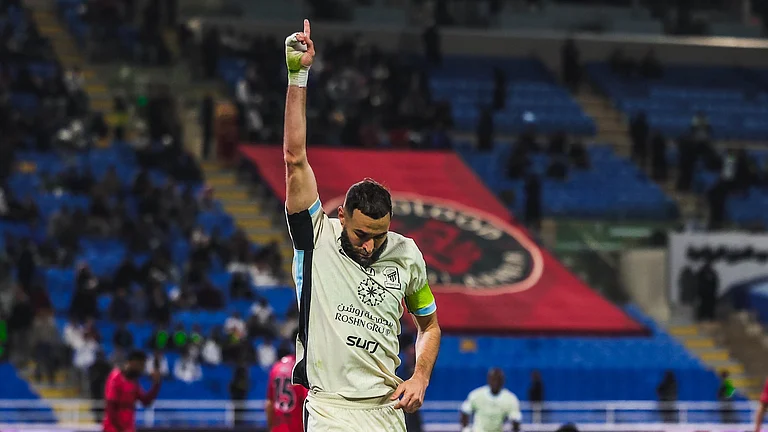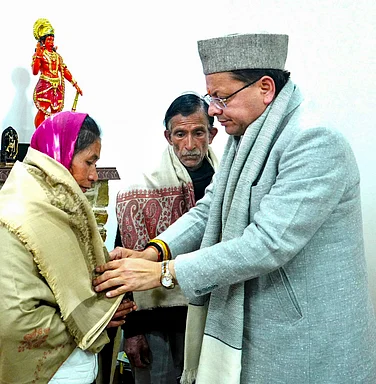WITH Delhi accounting for more crime than Calcutta, Mumbai and Chennai put together, it is entering one of the most lawless phases in its life as the capital. A spate of unsolved murders, robberies and kidnappings for ransom has left the hapless Delhi citizen in a state of shock. And a perplexed police force, having failed in both prevention and investigation of crime, are stumbling from excuse to lame excuse. Insiders say this is largely due to pathetically low investigational abilities of the officers, and in the case of the force as a whole, slow reflexes and near-zero motivation apart from, of course, a deadweight of a workload.
As a result, Delhiites have increasingly stopped reposing trust in the police. Tired of getting the same stock answers each time they approach the cops, many finally give up pursuing the case. A journalist who wishes to remain unnamed was recently attacked near her apartment in Nizamuddin by two scooter-borne intruders. She filed a complaint but the police was reluctant to even register a proper fir. Finally she gave up on the case. Says she: "I went to the police. They were extremely courteous but it was very clear that they wouldn't do anything. I'm not relying on the cops at all. I'm taking my own security measures."
The police have also developed a novel method of burying cases once the media glare and accompanying public heat is off. When a mysterious stalker struck in south Delhi's upmarket Vasant Kunj targeting single women, the police was hyperactive for some time. Shivani Jajodia, a producer with ndtv, was killed on November 19, 1997, and at least seven women were attacked in the area around the same time. Two years later, the cops have failed even to identify the stalker, let alone arrest him. Says Shivani's father Vinay Mohan Maithel: "We've lost all hope. We only hope that no girl becomes another Shivani."
Madhu Khatri is the only girl who probably saw the killer when she was attacked. But the police follow-up tapered off. Says Madhu's mother: "Initially the cops used to visit regularly. Then they started calling on the phone. Slowly the frequency of the calls began to diminish. And now for a long time no police officer has inquired about it."
A cursory study of almost all murder cases in the last two years shows the lack of training and laxity on the part of the police. Their initial reaction is invariably so slow that by the time they actually start investigating it is too late: either the evidence is destroyed or the trail is cold.
For instance, on the night of March 8, 1999, when Outlook cartoonist Irfan Hussain was being stabbed by his killers, the half-asleep cops at the Sahibabad police station in UP's Ghaziabad district were insisting that they could do nothing till a case was registered in Delhi. And it took Delhi Police two long days to decide whether the crime was committed under the jurisdiction of the east or the southwest district.
When it comes to investigation, things are no better. Unskilled and untrained, cops make simple mistakes which in the long run derail the investigation. In the Sonia murder case which occurred in north Delhi's Mukherjee Nagar on November 9, 1998, the police forgot to lift the fingerprints from the glass and phone in Sonia's room.The police kept harping on a sex angle while Sonia's parents maintained that a property dispute could be the motive. The case has since been transferred to the cbi. But in the absence of even basic evidence, it will be a tough case to crack.
The reason why most crime and murder cases go undetected is probably due to the lack of basic training. Admits a top Delhi Police officer: "Investigation is a skill and we must admit that our investigators are not skilled enough." According to him, the Police Training School has the capacity to train just 1,500 men and emphasis is laid on law and order than on investigation. As a result, the crime rate spirals. Taking instances of just murder and attempts to murder, 1998 recorded 1,208 cases, up from 1,064 the year before. The same holds true for robberies, rapes and kidnaps.
Some officers feel the way out is to have separate teams for investigation and law and order. "The police officer investigating a murder case is also responsible for maintaining law and order, which makes things really tough on him," points out a senior officer. But officially, Delhi Police has strongly opposed the move to create branches for investigation and law and order.
What happens typically in many cases is that when the police finds itself at a dead end, a new twist is given to the case: baffling questions are left unanswered; new conjectures are drawn based on flimsy presumptions to feed a fickle media and finally the file is closed.
Like in the Rajiv-Monica case. On August 5, 1998, the bodies of Rajiv and Monica-both Zee TV employees-were found in a Maruti 1000. After a lot of confusion, the police finally declared that Rajiv, after raping and killing Monica, killed himself by consuming poison. But several questions remain unanswered. When the couple was last seen at the Taj Palace hotel, Monica was wearing a skirt and jacket. But she was found dressed in a sari. Where did they go after leaving the Taj? Did they meet anybody en route? Joint Commissioner of Police Amod Kanth is relentless: "What can you do if people fail to see reason? It is clear that Rajiv raped and killed Monica before consuming poison."
The murder of Shivani, a reporter with The Indan Express, is as baffling. She was found murdered in her Navkunj Apartments in Patparganj, east Delhi, on January 23, 1999. Despite it being a daylight attack, the police still seems clueless. Except for a statement made by home minister L.K. Advani in Parliament in response to an unstarred question by MPs Janardan Yadav and Rahasbihari Barik, precious little was done. Advani was asked "whether it has been revealed by investigation...that a minister and a police officer are under suspicion". In a carefully-worded answer, Advani said: "The investigation being conducted in this case has not revealed involvement of any minister." Left unsaid is the likely involvement of a police officer whose name has been doing the rounds. Says Shivani's husband Rakesh Bhatnagar: "I am really worried about my life and that of my son, who is only a few months old."
Clearly, if crime in Delhi is to be contained, the police has to wake up to the changed crime environment. The response to sos calls has to be speedier, more professional. Delayed response and failure to nab criminals have worked to the advantage of the criminals. The police has to change its ways.


























